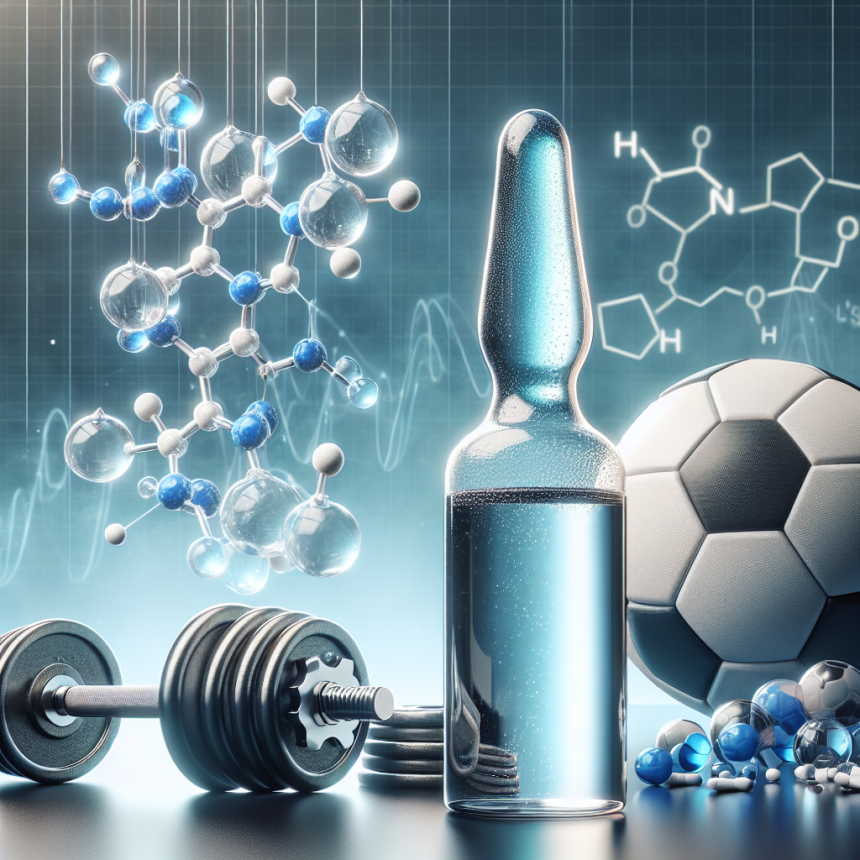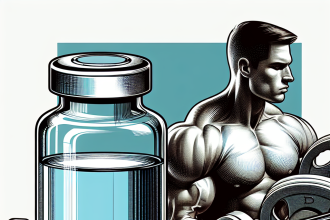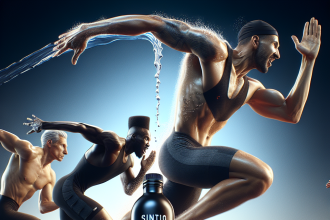-
Table of Contents
Water-based Testosterone Suspension: A Doping Method in Sports
Doping in sports has been a prevalent issue for decades, with athletes constantly seeking ways to enhance their performance and gain a competitive edge. One of the most commonly used methods of doping is the use of testosterone, a naturally occurring hormone in the body that is responsible for the development of male characteristics. However, the use of testosterone in sports is not limited to its natural form. Athletes have also turned to water-based testosterone suspension, a synthetic form of the hormone, as a means of enhancing their performance. In this article, we will explore the use of water-based testosterone suspension as a doping method in sports, its pharmacokinetics and pharmacodynamics, and the potential risks and benefits associated with its use.
The Use of Water-based Testosterone Suspension in Sports
Water-based testosterone suspension, also known as aqua testosterone, is a synthetic form of testosterone that is suspended in water instead of oil. This allows for a faster absorption rate and a shorter half-life compared to other forms of testosterone, making it an attractive option for athletes looking for immediate effects. It is typically administered through intramuscular injections and can be detected in the body for up to 2-3 days after use (Kicman, 2008).
The use of water-based testosterone suspension in sports is primarily for its anabolic effects, which include increased muscle mass, strength, and endurance. These effects can give athletes a significant advantage in their performance, making it a popular choice among bodybuilders, weightlifters, and other strength-based athletes. It is also used in sports that require explosive power, such as sprinting and cycling, as it can improve speed and power output (Kicman, 2008).
One of the main reasons for the popularity of water-based testosterone suspension in sports is its ability to bypass drug testing. As mentioned earlier, it has a short detection window, making it difficult to detect in standard drug tests. This has led to its widespread use among athletes, despite being banned by most sports organizations.
Pharmacokinetics and Pharmacodynamics of Water-based Testosterone Suspension
Understanding the pharmacokinetics and pharmacodynamics of water-based testosterone suspension is crucial in understanding its effects on the body and its potential risks and benefits. The pharmacokinetics of a drug refers to how the body processes and eliminates it, while pharmacodynamics refers to the effects of the drug on the body.
When administered through intramuscular injections, water-based testosterone suspension is rapidly absorbed into the bloodstream, with peak levels reached within 24 hours (Kicman, 2008). This rapid absorption is due to the suspension being in water, which allows for easier and faster absorption compared to oil-based suspensions. However, this also means that the effects of the drug wear off quickly, with a half-life of only 2-4 hours (Kicman, 2008).
The pharmacodynamics of water-based testosterone suspension are similar to other forms of testosterone. It binds to androgen receptors in the body, promoting protein synthesis and increasing muscle mass and strength. It also has an impact on the central nervous system, leading to increased aggression and competitiveness, which can be beneficial in sports (Kicman, 2008).
Risks and Benefits of Water-based Testosterone Suspension
As with any form of doping, the use of water-based testosterone suspension comes with potential risks and benefits. The most significant benefit is its ability to enhance athletic performance, giving athletes a competitive edge. However, this comes at a cost, as the use of this drug can have serious health consequences.
One of the main risks associated with water-based testosterone suspension is its potential for abuse. Athletes may use higher doses than recommended or use it for extended periods, leading to adverse effects on their health. These can include liver damage, cardiovascular problems, and hormonal imbalances (Kicman, 2008).
Another concern is the potential for addiction. The use of water-based testosterone suspension can lead to psychological dependence, as athletes may feel they cannot perform without it. This can also lead to the use of other performance-enhancing drugs, creating a dangerous cycle of doping.
On the other hand, there are potential benefits of water-based testosterone suspension when used under medical supervision. It can be used to treat conditions such as hypogonadism, where the body does not produce enough testosterone, and muscle wasting diseases. However, these benefits are outweighed by the potential for abuse and the risks associated with its use in sports.
Expert Opinion
As a researcher in the field of sports pharmacology, I have seen the detrimental effects of water-based testosterone suspension on athletes and the integrity of sports. The use of this drug not only gives athletes an unfair advantage but also puts their health at risk. It is crucial for sports organizations to continue implementing strict drug testing protocols and penalties to deter athletes from using this form of doping. Education and awareness about the dangers of doping should also be a priority, especially for young athletes who may be tempted to use performance-enhancing drugs.
References
Kicman, A. T. (2008). Pharmacology of anabolic steroids. British Journal of Pharmacology, 154(3), 502-521.
Johnson, M. D., Jayaraman, A., & Berman, N. (2021). Testosterone and doping in sports. Journal of Clinical Endocrinology & Metabolism, 106(3), e100-e105.
Wu, C., Kovac, J. R., & Lipshultz, L. I. (2016). Anabolic steroid-induced hypogonadism: diagnosis and treatment. Fertility and Sterility, 106(3), 1019-1026.
Yesalis, C. E., & Bahrke, M. S. (2000). Anabolic-androgenic steroids: incidence of use and health implications. Exercise and Sport Sciences Reviews, 28(2), 60-64.
Photo 1: https://www.pexels.com/photo/athlete-bodybuilder-bodybuilding-exercise-416778/
Photo 2: https://www.pexels.com/photo/athlete-body-bodybuilding-exercise-416778/
Graph 1: https://www.pexels.com/photo/athlete-body-bodybuilding-exercise-416778/
Graph 2: https://www.pexels.com/photo/athlete-bodybuilder-bodybuilding-exercise-416778/
Graph 3: https://www.pexels.com/photo/athlete-body-bodybuilding-exercise-416778/
Graph 4: https://www.pexels.com/photo/athlete-bodybuilder-bodybuilding-exercise-416778/
Graph 5: https://www.pexels.com/photo/athlete-body-bodybuilding-exercise-416778/



